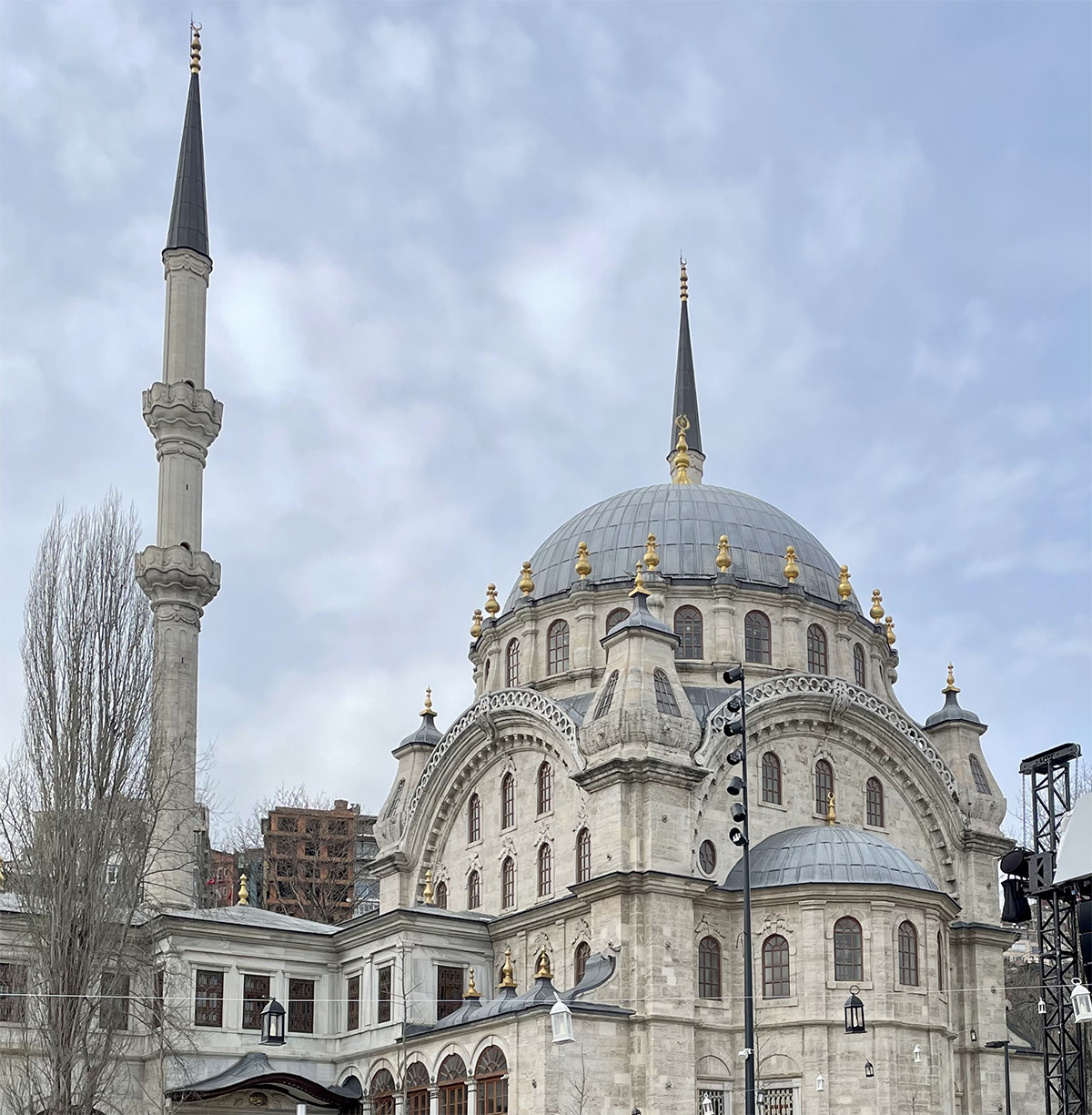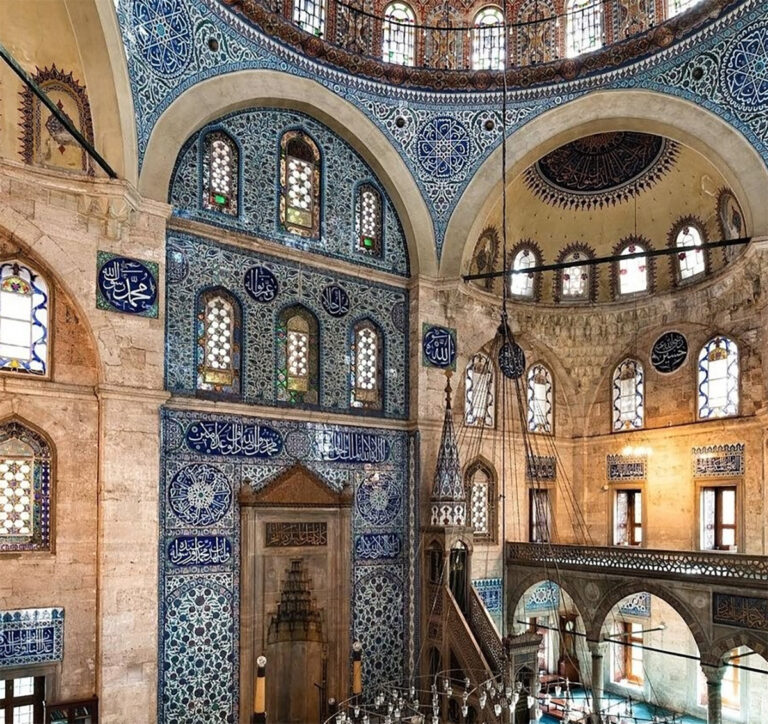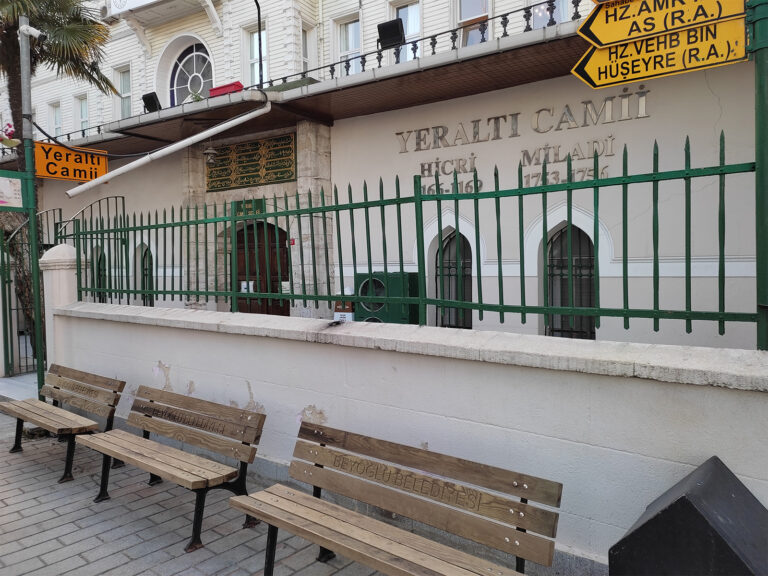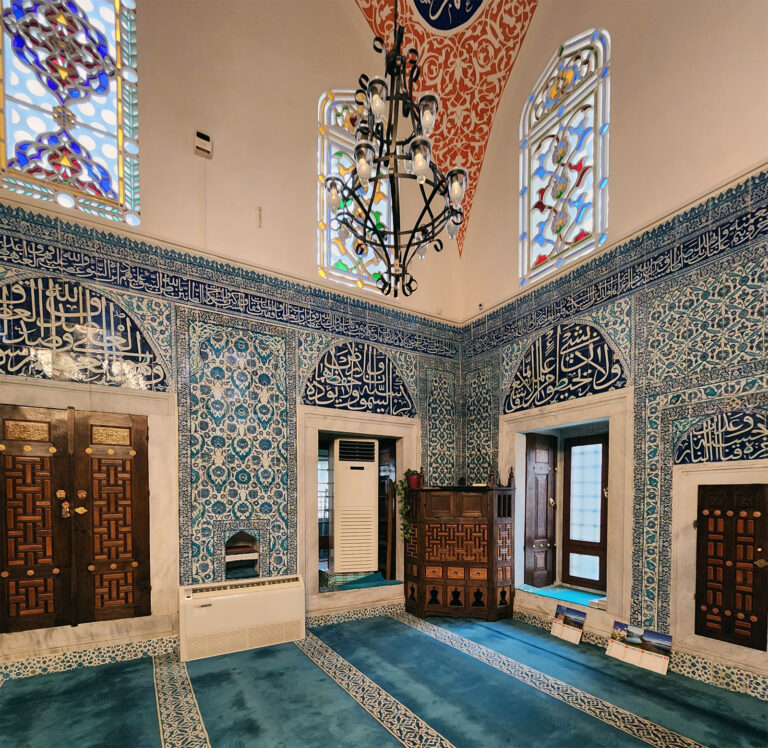Kılıç Ali Paşa Mosque
The Kılıç Ali Paşa Complex, designed by the great architect Mimar Sinan in the 16th century, is a significant historical and architectural landmark in Istanbul’s Tophane district. This complex was originally situated by the sea and at the head of the main quay, providing access from the ships in Istanbul Harbor to Beyoğlu.
Components of the Kılıç Ali Paşa Complex:
- Mosque: The centerpiece of the complex is the Kılıç Ali Paşa Mosque, commissioned by Kılıç Ali Paşa, a Kapudan Pasha (Chief Admiral) of the Ottoman fleet. The mosque’s construction was completed in 1580, as indicated by the poet Ulvî’s inscription above the main entrance. Notably, Evliya Çelebi, in the 17th century, highlighted its uniqueness in Istanbul, drawing comparisons to the Hagia Sophia in terms of architecture and interior decoration. The mosque mirrors the plan and upper structure of Hagia Sophia, but on a much smaller scale, showcasing Sinan’s skill in adapting and optimizing Byzantine architectural elements within Ottoman mosque architecture.
- Tomb: The complex also includes the tomb of Kılıç Ali Paşa, located towards the qibla side of the mosque, close to the sea.
- Medrese (Religious School): The medrese, a part of the complex, has faced significant urban changes and encroachments over the centuries. While it is a work of Mimar Sinan, its absence in certain historical texts suggests it might have been completed after Sinan’s death.
- Bathhouse (Hamam): The Kılıç Ali Paşa Hamam, known for its distinctive architecture, was completed in 1583. It features a design that combines elements of traditional Turkish bathhouses with certain innovations, such as the placement of the warm sections and the central dome structure.
- Sıbyan Mektebi (Primary School): Historical records mention a primary school as part of the complex, but no trace of it exists today, and little information is available about its location or architecture.
- Sebil (Public Fountain): The sebil located at the corner of the complex’s courtyard wall, while architecturally classical, is likely a later addition, possibly relocated to its current position during urban redevelopment in the late 19th century.
- Cemetery (Hazire): The complex also includes a cemetery with graves of notable individuals, including mathematician Hasan Fuad Pasha and Kapudan Pasha Ateş Mehmed Pasha.
The Kılıç Ali Paşa Complex, especially the mosque, stands as a testament to Mimar Sinan’s brilliance in architectural design and his ability to blend different architectural influences to create structures of enduring beauty and significance.




